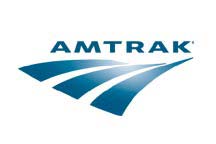The Journal Star has an excellent report (it was written by Jennifer Davis, so I expected nothing less) on the special council meeting last night. Last year, new council members Bob Manning and Barbara Van Auken were just learning the ropes of city budget planning. This year, they’re ready to make good on their campaign promises of increased fire protection and elimination of the regressive garbage tax.
Mayor Ardis is helping that cause by starting early to establish budget priorities and communicate them proactively to city staff (in the past, the city manager would write up a proposed budget and the council would react to it). But the big question is, how do you pay for more fire protection and eliminate a $2.4 million revenue source (garbage tax)?
In 2007, Mayor Jim Ardis wants the city to fully restore Fire Station 11 and find a “dedicated total public safety revenue stream.” Exactly what that is, Ardis admits he doesn’t know yet….
One idea is to take public safety funding off the property tax bills and replace it with a separate public safety tax. The difference is that the public safety tax could be applied to everyone who benefits from public safety services. Right now, non-profit organizations like hospitals, churches, and charities don’t pay property taxes, yet they benefit from police and fire protection.
If the protection we all share were paid for through a public safety tax instead of property taxes, the cost of that protection would be shared by all as well. Spreading out the cost would be more equitable, and may actually lower the amount homeowners pay for public safety services while increasing overall revenue at the same time.
Council members Van Auken and Manning also are throwing around ways to help strengthen Peoria’s older neighborhoods:
Van Auken also supports helping stabilize the older neighborhoods by freezing their property taxes so any additional increase in property tax revenue can be reinvested in those areas, somewhat of a pseudo TIF district. […] Third District Councilman Bob Manning suggested a similar “urban renewal” plan to Van Auken’s – freezing property taxes in certain areas to entice people to move back into the city’s core and reinvest.
It should be mentioned that these are just ideas and nobody has run the numbers yet to see how much such a plan would cost. This meeting was more of a brainstorming session. If the cost estimates come back too large, then the whole idea may be scrapped. But I’m glad to see them (forgive me for using this cliche) “thinking outside the box.”
That said, I doubt this plan is going to get off the ground. Whenever you freeze property taxes, you’re taking money out of district 150’s pocket, and they can’t afford any more revenue loss. And the state of the schools is one of the prime reasons people aren’t moving to the older neighborhoods (crime being the other reason) in the first place — not high property taxes. So this plan would seem to be self-defeating.
John Morris had several ideas, including one to make Peoria “a walkable city”:
He suggests $2 million each year from capital for sidewalks connecting Peoria’s neighborhoods to its assets, like the library and parks. “I can’t walk my two children from my home in the heart of the city to the library without feeling I’m taking our lives in my hands,” he said.
Well, there’s a difference between making the “heart of the city” more walkable and making the whole city more walkable.
In the heart of the city, sidewalks will help, but only if it’s coupled with slower traffic and a buffer between the sidewalk and the street. For instance, not long ago I walked from my house in the Uplands to the Blockbuster video store in Campustown. Walking on my street with its on-street parking and 25 mph speed limit was very pleasant. Walking on Main Street was a nightmare. Main Street is five lanes, which means traffic moves much faster than the posted 30 mph speed limit, and the narrow sidewalks abut the street, making you feel very unsafe as cars go whipping past you.
In the newer parts of the city, as you go north, these areas were not created to be “walkable,” but to be accessible only by automobile. Adding sidewalks (other than for recreational walking around the neighborhood) is not going to allow you to walk to the park or the library, unless you’re willing to walk several miles along an arterial road. My dad and I have walked down the shoulder of Route 150 from Charter Oak Road to Glen Hollow and let me tell you, it’s not a pleasant walk on which you’d want to take your family. And when you get to the end, you still haven’t seen a park or library. It would take some radical changes to make these newer neighborhoods “walkable” in the way Morris describes.
There were more ideas that I may discuss in future posts, but this one is long enough!

 The
The